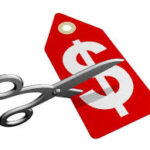TOLL FREE: 1 855.373.LEND
-
Four smart reasons to refinance with rates above 5%
Opportunities to refinance still exist
Once you have a mortgage, an eventual refinance is something to keep in the back of your mind.
An obvious time to refi is when interest rates drop and you’re able to lock in a new rate at least 75 basis points (0.75%) below your original rate. That’s typically the juncture mortgage professionals recommend because the overall savings would usually outweigh the cost of refinancing.
As mortgage rates rise — as they have significantly in 2022 — it shrinks the pool of borrowers who would benefit from a refi. However, different scenarios exist for homeowners to improve their loans through a refinance even as inflation pushes rates higher.
Should I refinance right now?
Most industry experts predict interest rates will rise throughout the rest of 2022 given the Federal Reserve’s likely actions to offset inflation — which could ultimately help home buyers.
Although not as apparent during this current period of rate expansion, refinancing can make sense for many borrowers. Of course, that’s determined by several factors, such as the remaining length of your mortgage, your loan type, and your financial situation.
Below are some examples of borrowers who should look into refinancing before the window to benefit closes.
If your ARM is about to reset
During a downswing of interest rates, the adjustable-rate mortgage can be your best friend. In the current landscape where rates rapidly swelled and are expected to keep climbing though, your monthly payment may climb along with them.
ARMs move directly with the overall interest rate market. That means every time the Fed hikes its target rate — which the central bank anticipates doing after each of its meetings this year — ARM rates hike right along with it. And when your rate resets, which most ARMs do once a year after their fixed-rate period, both your rate and payment could rise significantly.
Refinancing into a fixed rate will avoid the variable nature of the ARM and reduce the chance of paying even higher rates down the road. Although mortgage rates have shot up this year, they’re still low from a historical perspective.
If you’d like to eliminate the risk of watching your adjustable rate balloon, locking one in would make sense.
If you can lower your interest rate
This one’s plain and simple. If you have a higher fixed rate than the current market average, it would likely behoove you to talk to your lender and refinance. A recent report from Black Knight showed that 1.34 million borrowers would benefit from refinancing with the 30-year fixed-rate mortgage at 5%. If you fall into that category, you probably held your loan for a long time. The largest group of those borrowers locked in their mortgage before 2004.
However, if you never got around to refinancing over the past few years, the opportunity to improve your rate could be gone soon.
If you want to cash out home equity
While the unprecedented home price growth of the past two years makes buying expensive, it compiled a record-high amount of equity for homeowners.
A common way to tap into the equity you built up is through a cash-out refinance. Doing so requires replacing your loan with a new mortgage but you get paid out whatever the difference is between those two. (Although, lenders typically prefer borrowers keep 20% of equity in place as a buffer against default.)
To figure out your total equity, take the current value of your home and subtract your loan balance. For example, if your house is worth $300,000 and your loan balance is $200,000, then you have $100,000 in equity.
Lenders can help you with the assessment and run comps on recent sales of similar properties. The cash withdrawn can be used however you choose, including paying off debts or buying a second home.
If this sounds like the option for you, check to see which lenders have the best cash-out rates before you start.
If you can remove PMI or MIP
Conventional private mortgage insurance (PMI) goes away automatically once the borrower reaches a position of 22% equity in their home. It can also be canceled by request at 20% equity.
For FHA borrowers, mortgage insurance premium (MIP) lasts the entirety of the loan if you don’t put 10% down. However, once these borrowers reach 20% equity and have credit scores above 620, refinancing into a conventional mortgage and dropping your MIP is possible.
Knocking off this extra cost is a great way to save money over time. Talk to your loan officer about getting out from under mortgage insurance before rates rise further.
The bottom line for refinancers
Mortgage rates already grew at a historic pace this year and that could be the theme of 2022. For any borrowers considering a refinance, the time to make a move is now.
No matter which type of refinancing suits you, doing it quickly before further Fed hikes will likely be the best way to save money on your mortgage.




